|
|
Post by lugg on Feb 20, 2021 19:11:08 GMT
Stunning scenery. I guess that coffee was very welcome.
|
|
|
|
Post by onlyMark on Feb 20, 2021 19:48:35 GMT
I have to admit, I don't like the coffee. Too strong for me. That was Mrs M's. She was brought up on it. I had a latte macchiato. The daughter had hot chocolate.
The plan we had was to go to Spain in a month or so but that's a none starter now, so I'll be off to Germany for some important appointments and return to, I hope, some spring blossoms and the countryside greening up a bit. I can see the potential in the scenery but I'm a bit fed up with waiting for it.
|
|
|
|
Post by kerouac2 on Feb 20, 2021 20:45:26 GMT
The coffee is definitely an acquired taste -- and a bit difficult to acquire, although I am halfway there. But since I am not even a coffee drinker, it is just an exotic activity for me. No way could I imagine drinking that every day, several times a day...
Too bad you can't go to Spain, but things are so perturbed now that I am having trouble finding even a short trip to take elsewhere in France at the moment. With a curfew at 18:00, it makes for very short days of sightseeing.
|
|
|
|
Post by bixaorellana on Feb 21, 2021 5:41:20 GMT
The bridge was certainly worth the walk! Beautiful views and interesting history notes.
I'm glad I'm not the only one who rejects Turkish coffee. The only time I ever enjoyed it was once when it was made by an Englishman in his home. In Turkey I despaired of getting a nice cup of coffee. As long as I'm admitting my Philistinism, I'll go ahead and admit I didn't like coffee in Sicily either.
|
|
|
|
Post by onlyMark on Feb 21, 2021 7:41:11 GMT
In restaurants/cafes here there is an option on the menu to have Nescafe. Very civilised.
I don't have it though as when you know you can get something easily at home, and made better, you don't have it when you are out.
|
|
|
|
Post by onlyMark on Feb 22, 2021 12:28:10 GMT
We decided it was time for a trip out of Sarajevo. Not too far but enough to stretch our legs and a bite to eat. We had to start somewhere to whittle down all the places we want to go so we plumped for a small village in the hills, at least we can now check it off our very long list. It’s not big enough to devote a whole report to by itself, so I’ve slipped it in here. About 45 mins along a nice new dual carriage way is a town called Zenica - it is the third or fourth (depending on your source of information) largest city in Bosnia - population somewhere around 165,000. It is also the biggest industrial city and on my drive in to the country in January I had passed it. My route in from Croatia took me south a little, then east, then south again to Sarajevo, around 270km. All but 80km of it was on new(ish) dual carriageways. The 80km that as not was through a valley to the north of Zenica and ending in the city where another dual carriageway began taking me to Sarajevo. The reason I mention it is because the 80km of winding and busy single carriageway was suffering so much from air pollution I had to close all the windows and use the aircon to filter the air - but I could still smell it and at one point was stinging my eyes. South of Zenica it cleared as I put my foot down and left the city behind me. It is not particularly an attractive place and this is typical of the view - 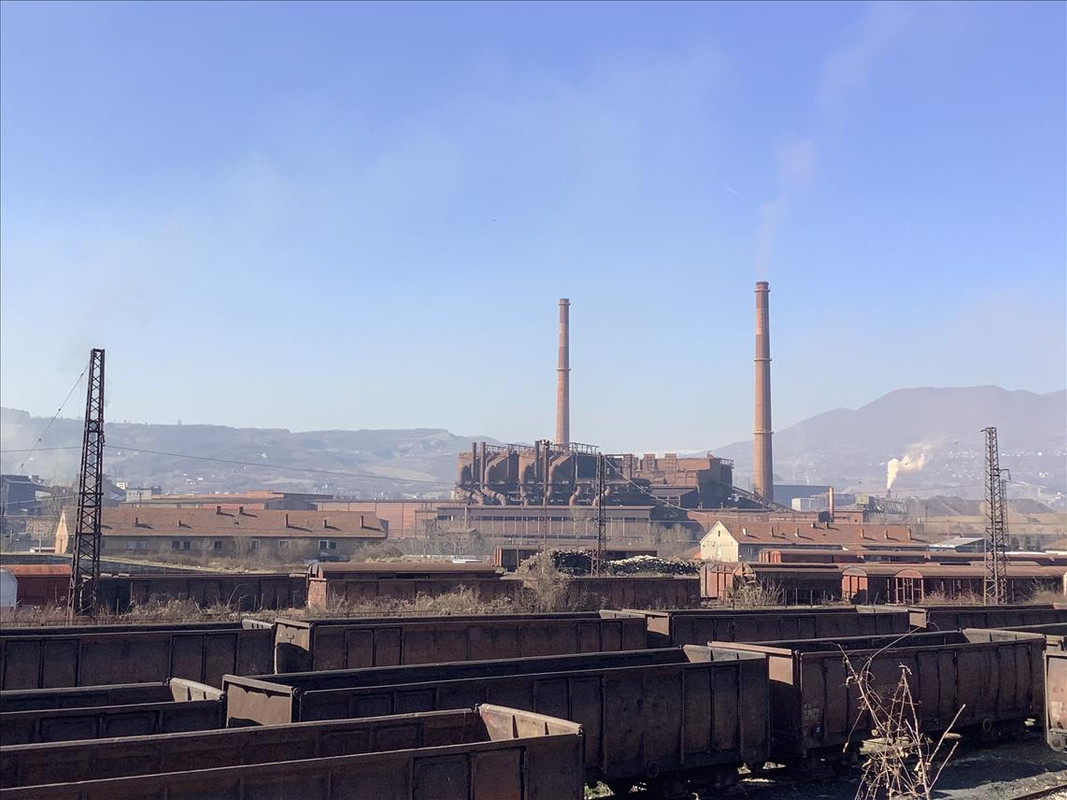 But, we headed into the hills to visit a little village called Vranduk. This is what is used to look like in the 19th Century - 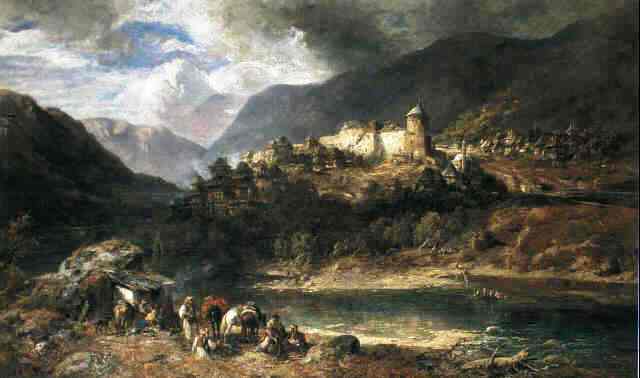 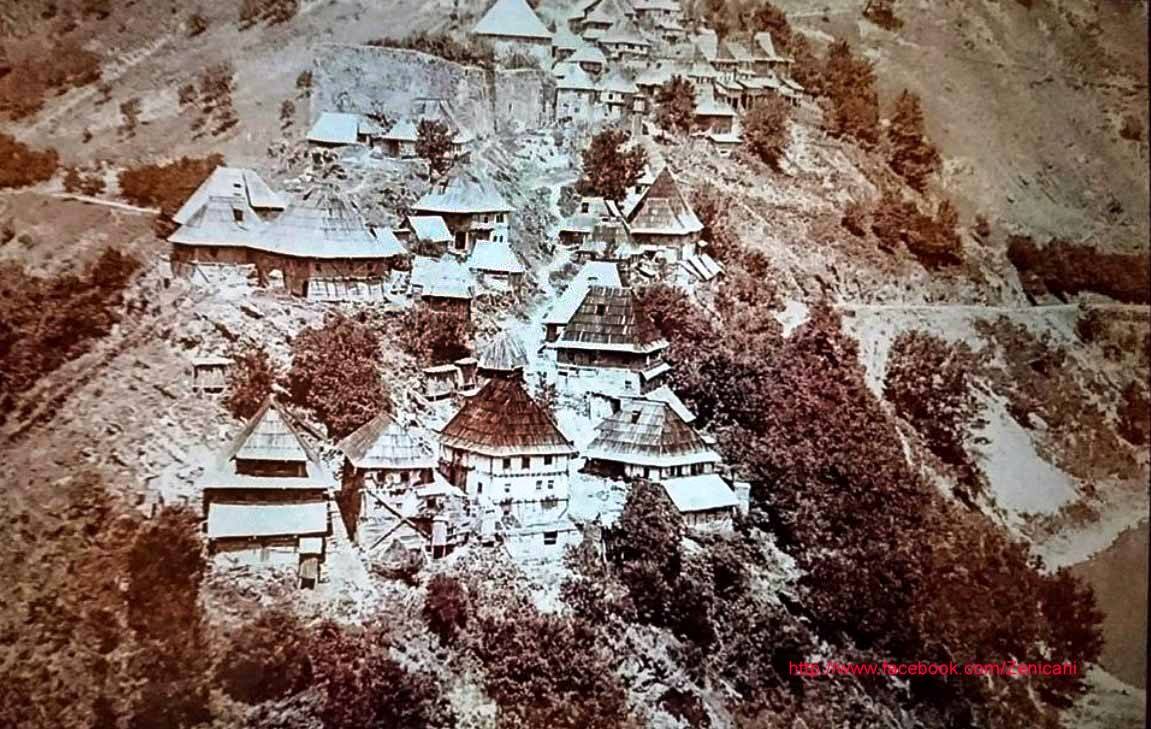 The village itself is one of the oldest and well preserved settlements of Bosnia and Herzegovina, dating back to the 14th century and times of the kings of Bosnia and is established around medieval citadel of the same name. A small mosque was built below citadel after the Ottoman conquest of the Bosnian Kingdom, which is still standing today. The mosque was dedicated to Sultan Mehmed II, conqueror of Bosnia, and is also referred to as the Imperial Mosque or Emperor's Mosque. The reason for it being here is the main road from the north used to cut through the valley and as a ‘choke point’ led itself to an ideal location for a fortification. This unfortunately was not open when we visited but I am informed it has a small museum inside and at one time as used by the Austrians as a prison. We walked up and down more steps we could shake a stick at, had to backtrack so as not to drop off a cliff a few times, but it was good to get a bit of exercise. This first picture is if the mosque, with unusually, a wooden minaret, the rest are randomly taken as we moved around - 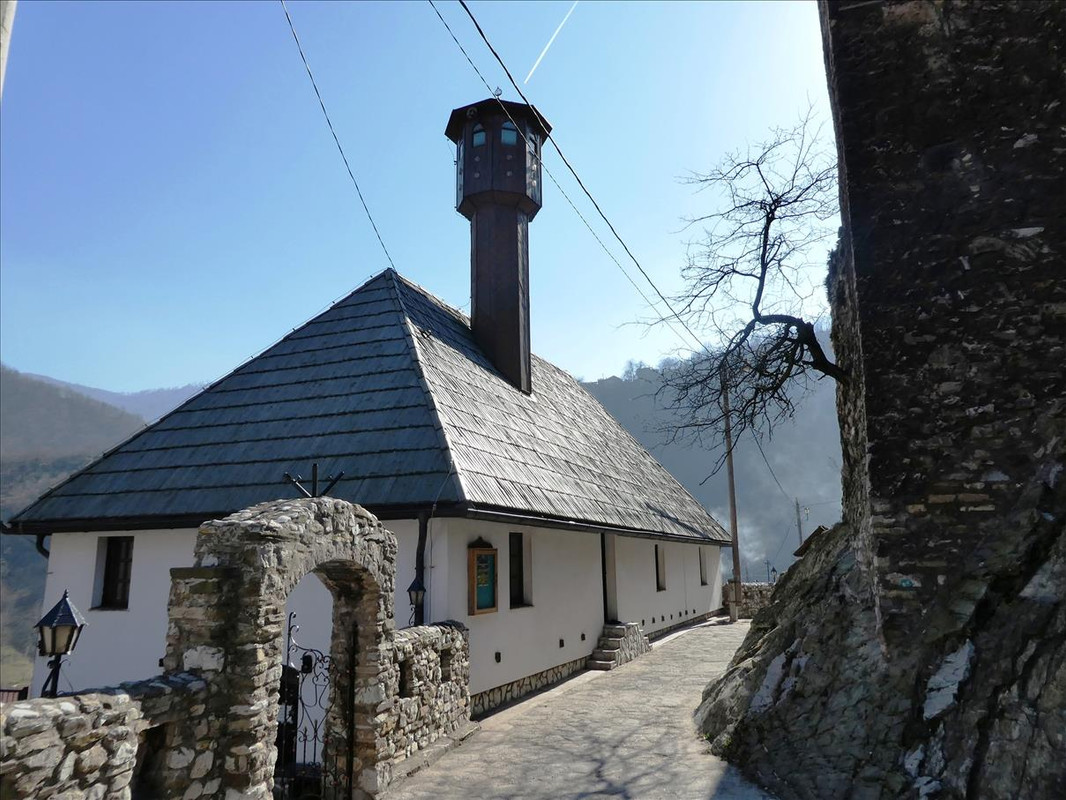  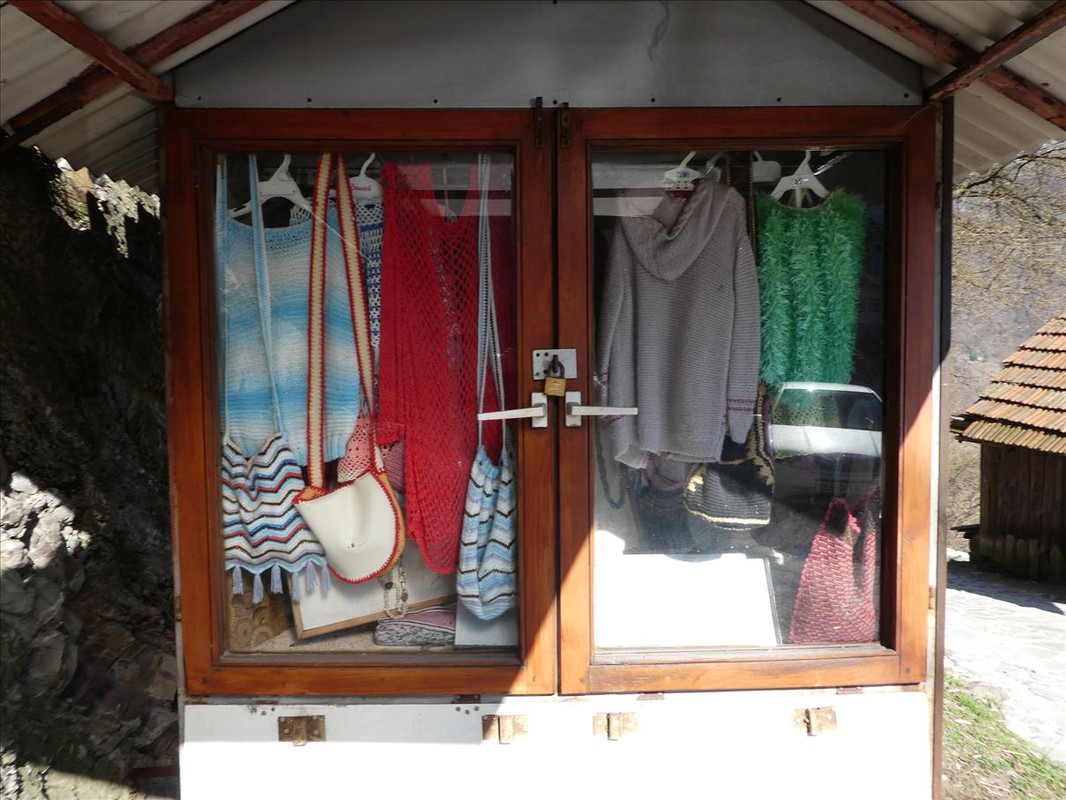 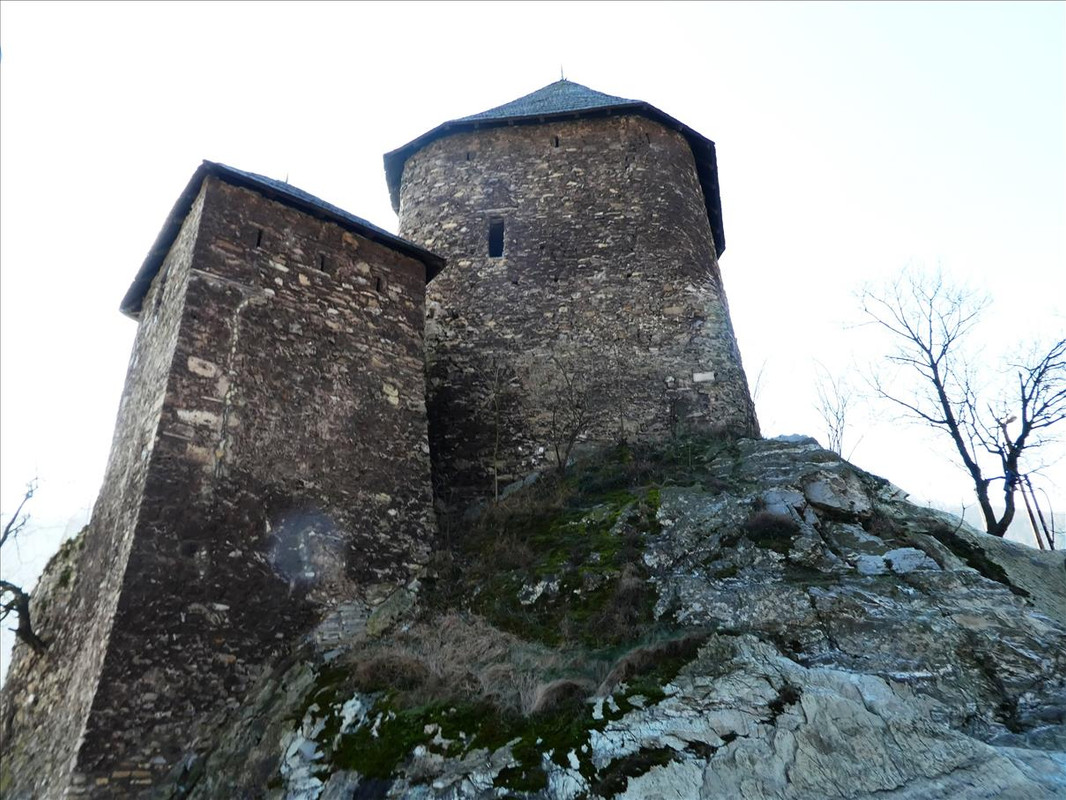    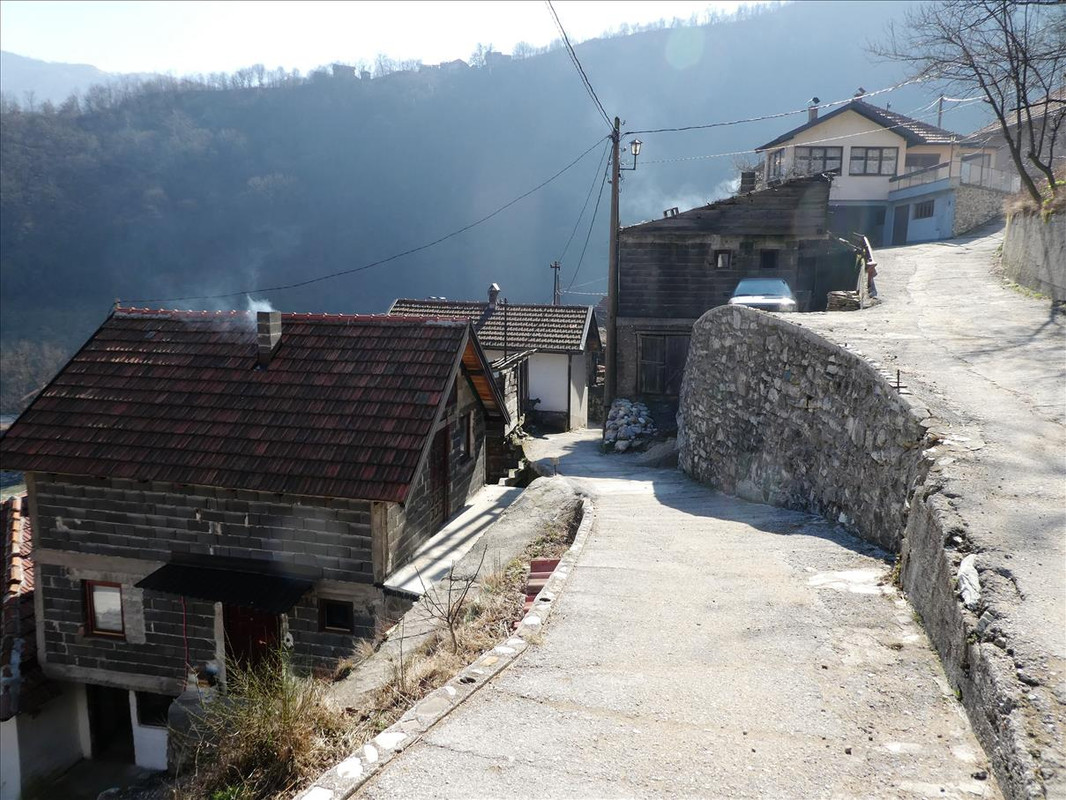 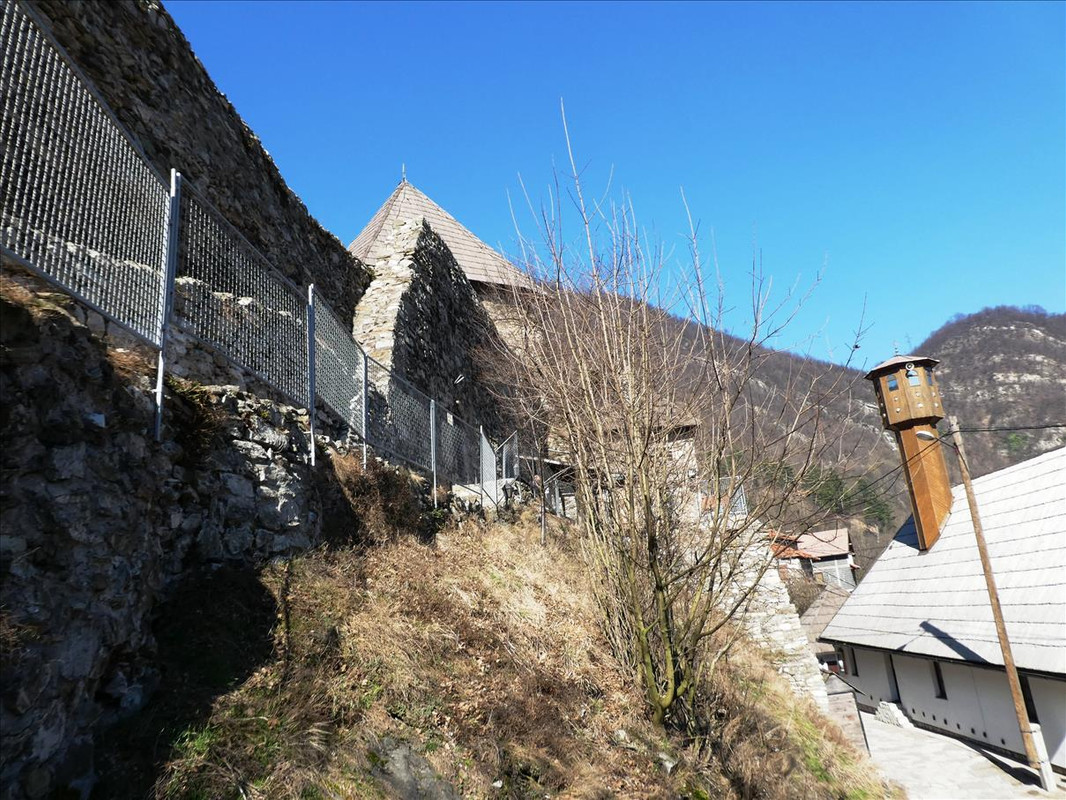 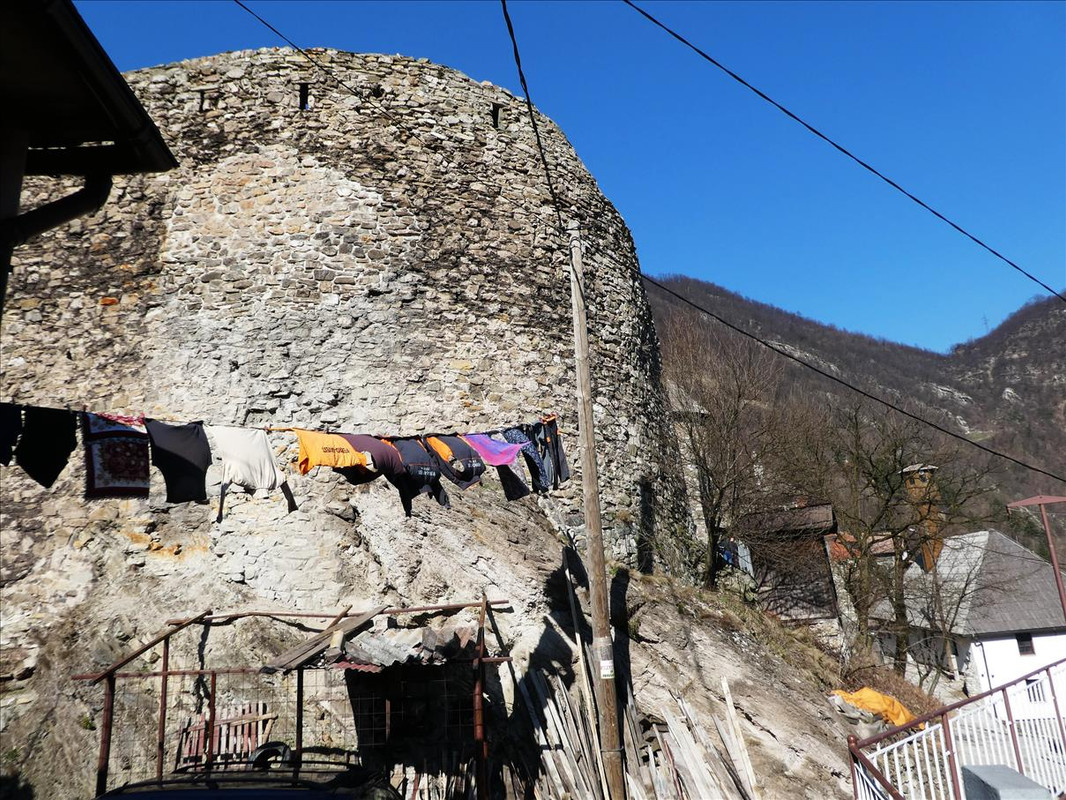 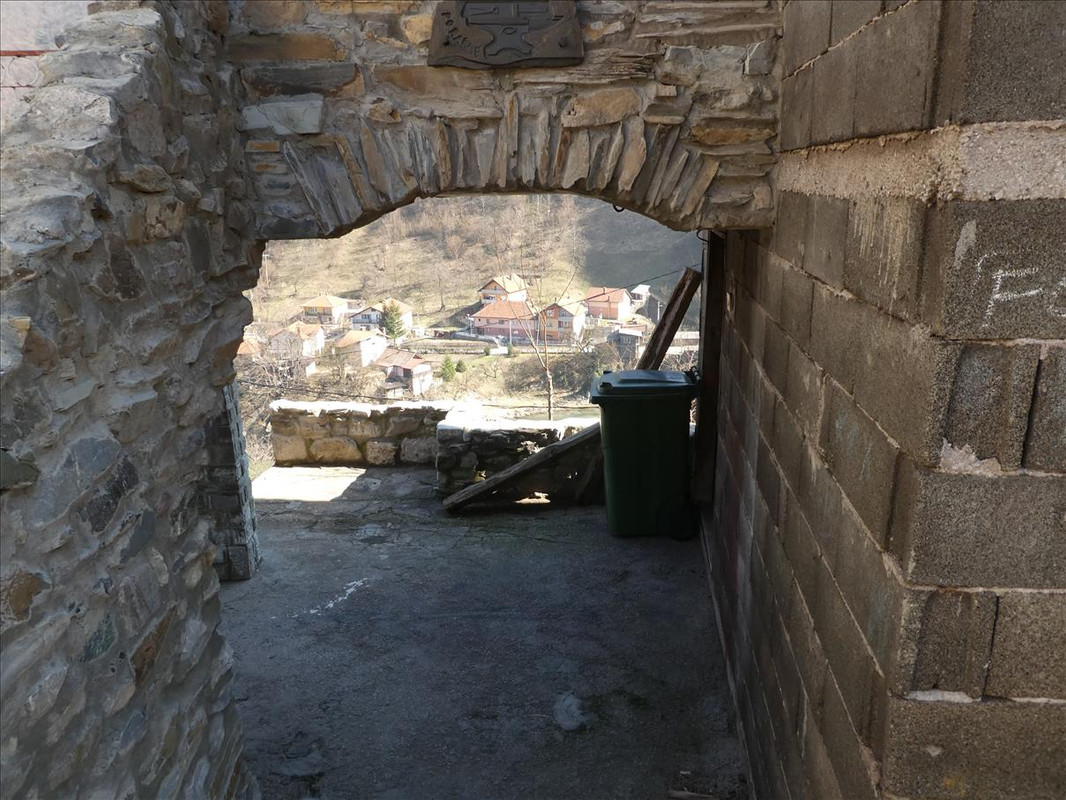 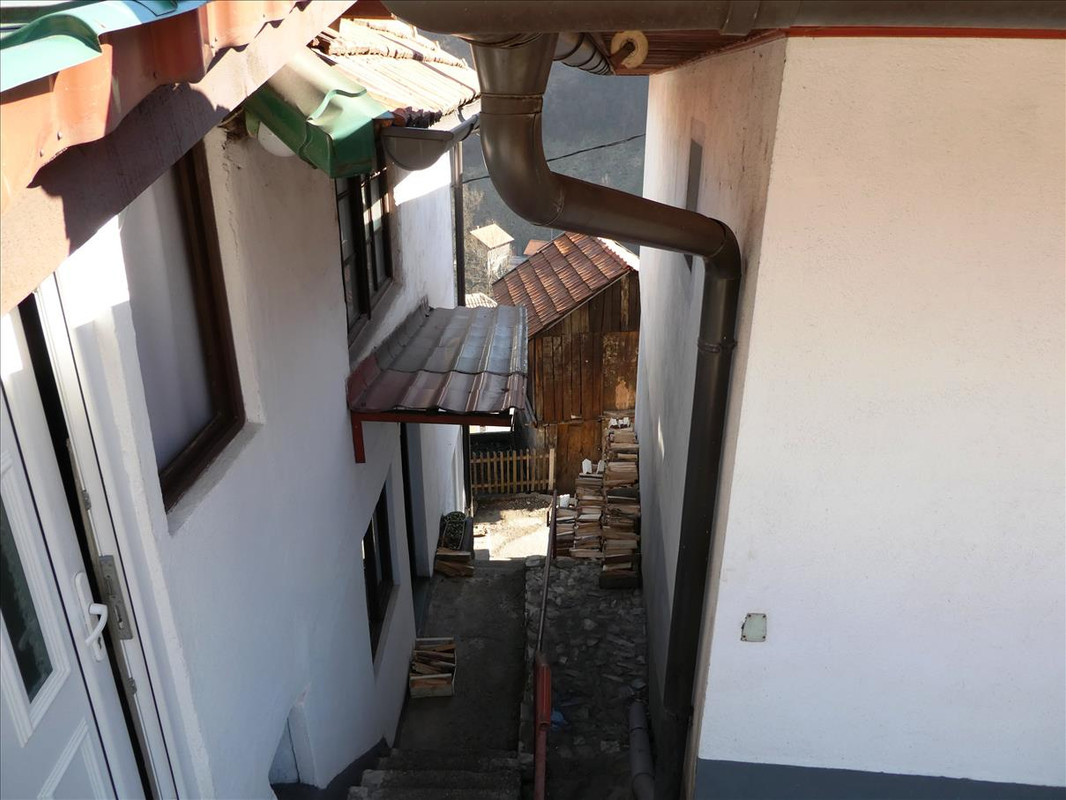 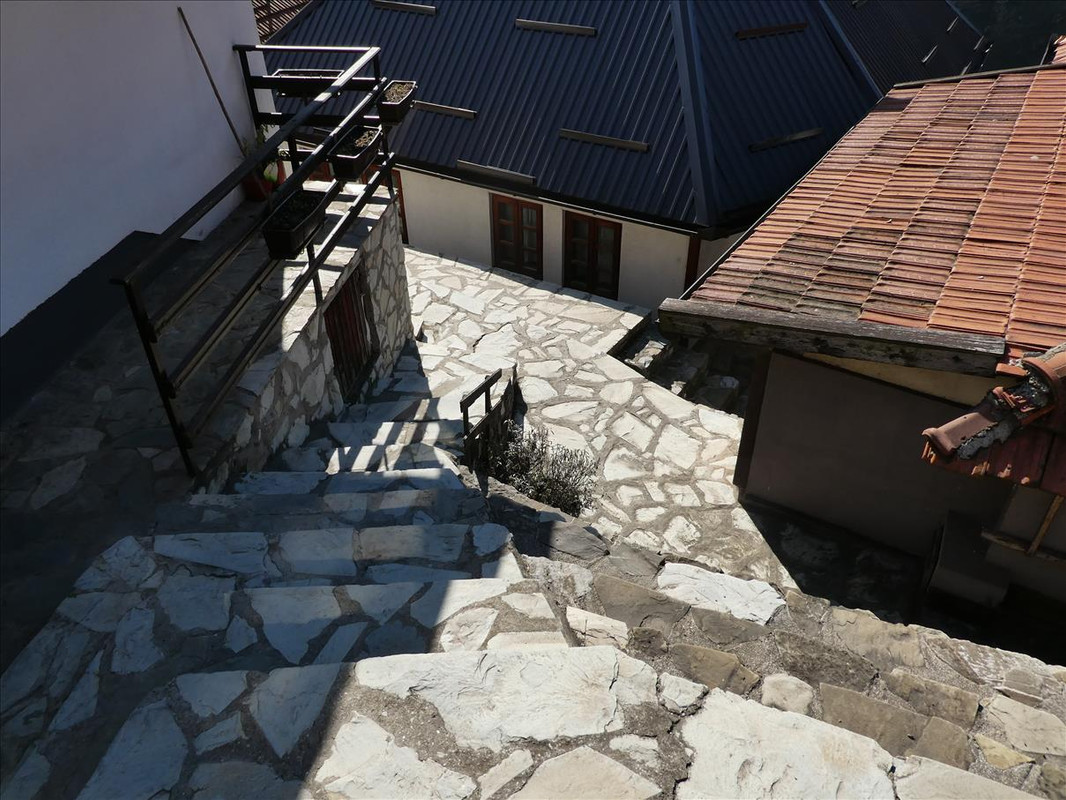 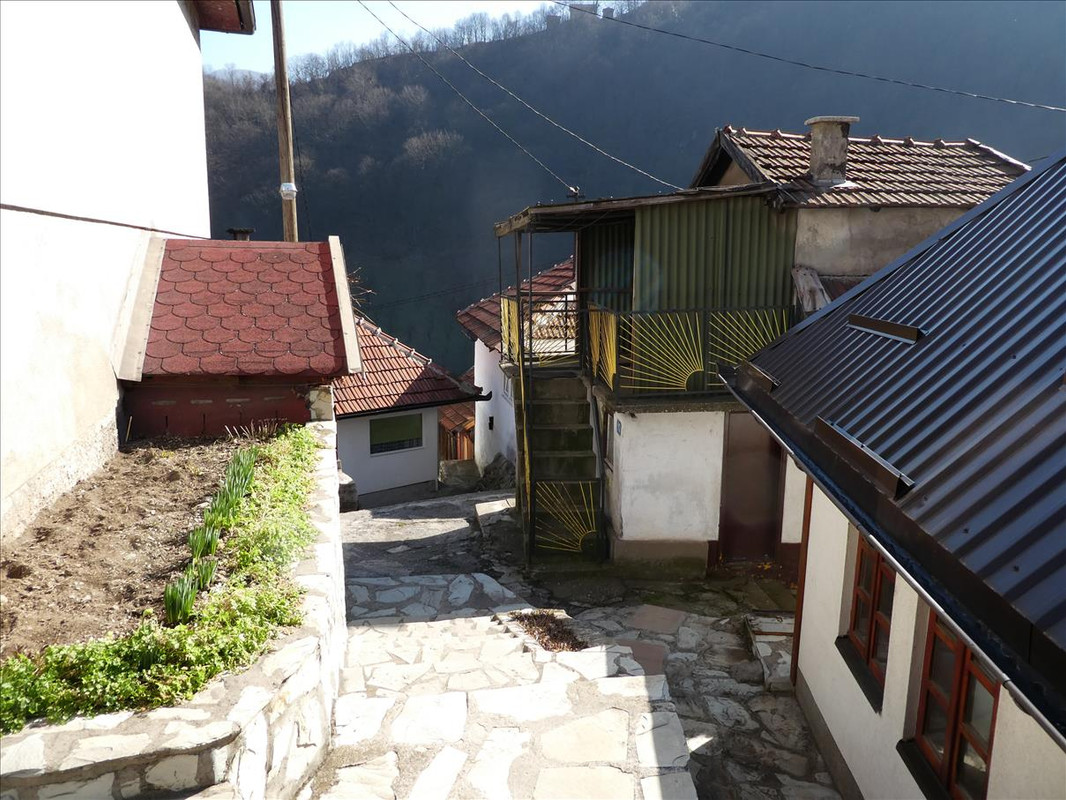  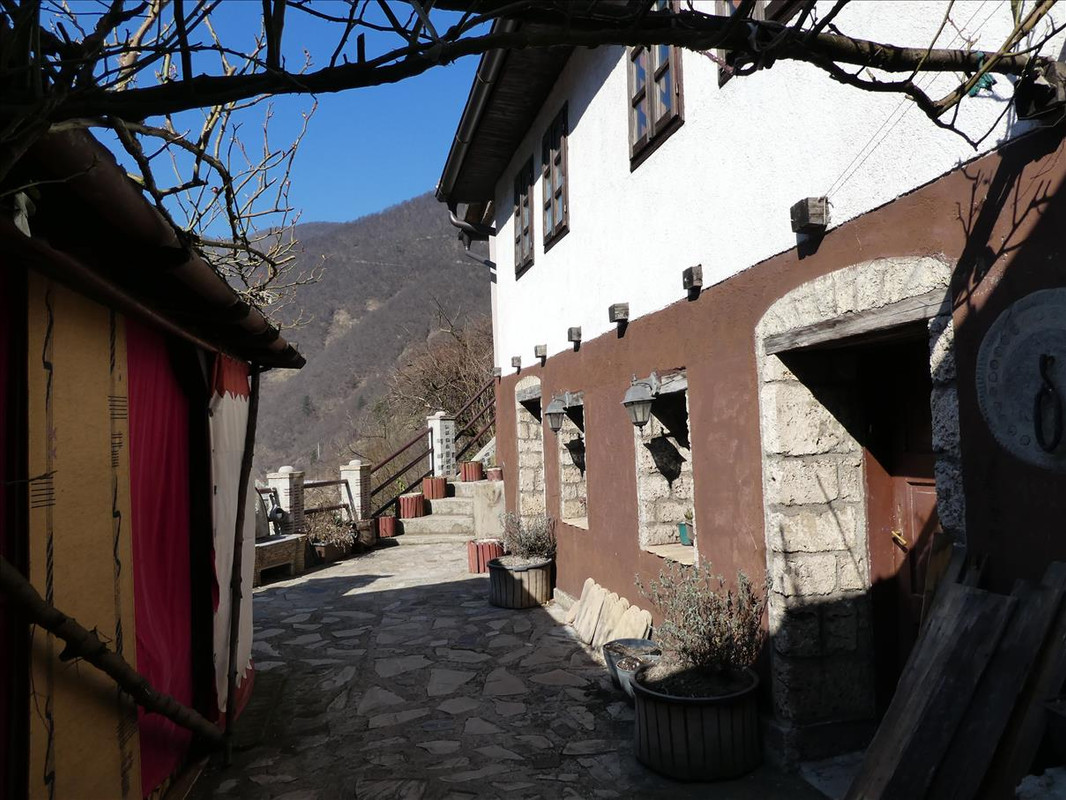 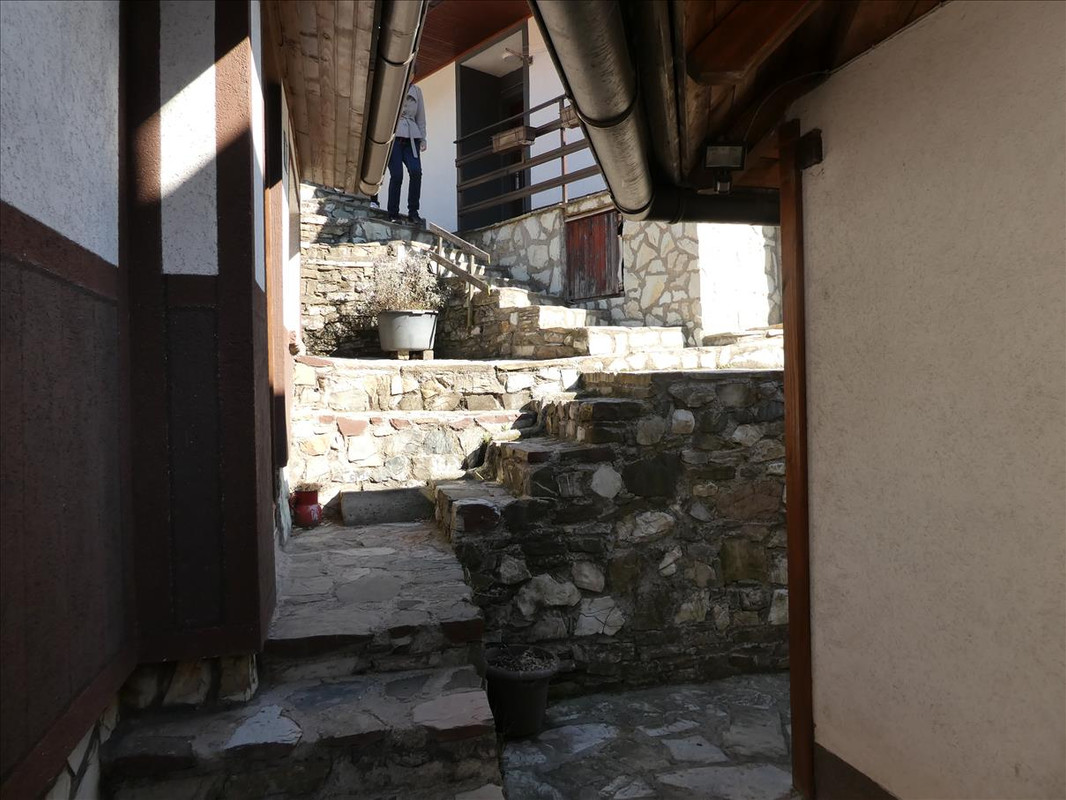   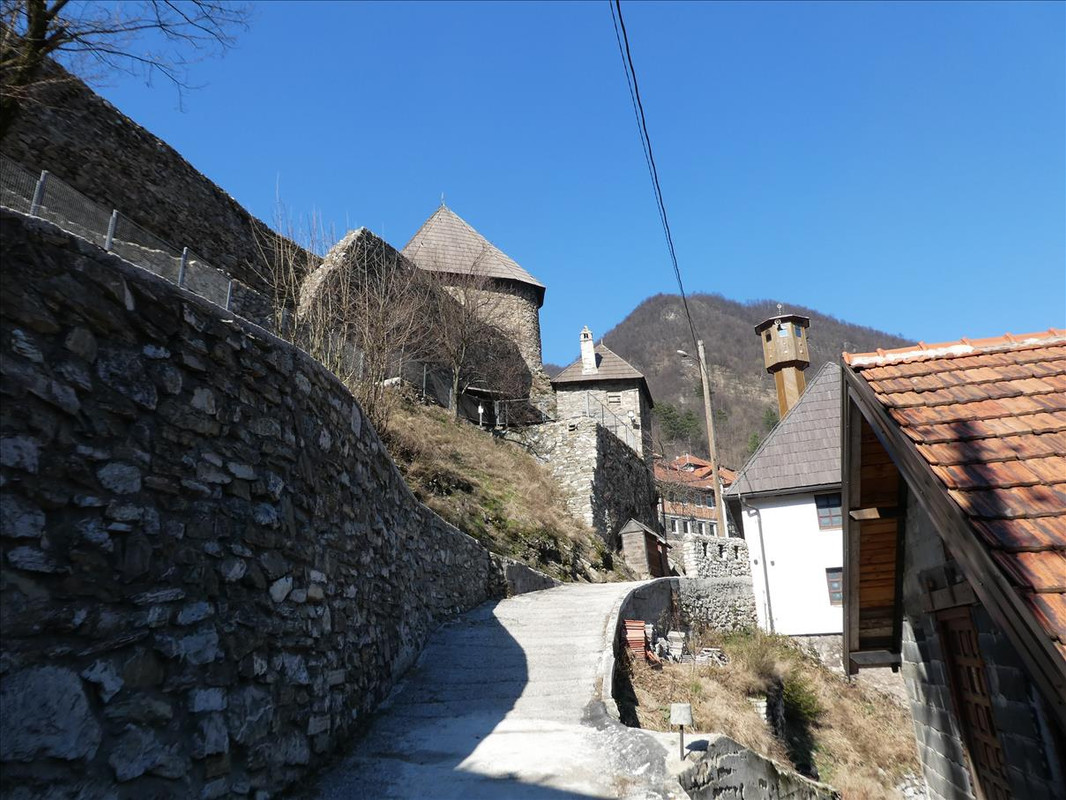 I don’t know how they manage in the village because you need a car to get up the hills to it yet there is little space anywhere for parking, there are no shops and no cafes or restaurants. As we began to get hungry we slipped down the hills and called in the aforementioned Zenica, which has a reasonably pleasant pedestrian street, to grab a late lunch. Fortunately it was a Sunday so the pollution was minimal, but we drove in, parked up, put our masks on and immediately stopped dead. The three of us noticed more or less at the same time, nobody else was wearing them. Hundreds were walking lazily along and maybe one in a hundred had one on, but just around their neck. Nobody in the shops or cafes or anywhere. I am aware every town, city, village, canton, area or entity are allowed to make their own rules - there is no central government regulations or policy in existence or enforced. In Sarajevo, in the week, only one in a hundred is not wearing a mask. Each shop/cafe has security to stop you entering if you haven’t got one on - but at the weekends due to the influx of visitors/locals from outside the city, seventy or eighty percent will walk around without a mask. I’m wondering now when we visit other towns, what the situation will be there. No matter to us as we always wear one, but either people are now fed up with wearing them and don’t bother, or they never bothered in the first place. No idea yet but the numbers of infections are going way up again. I’ll let you know. |
|
|
|
Post by kerouac2 on Feb 22, 2021 14:28:35 GMT
The first photo of the industrial site immediately struck me as some of the Bosnia that was shown in that French movie I saw several months ago (Les héros ne meurent jamais). But a lot of the rest of the movie did take place in picturesque areas such as you have photographed.
I see how you easily got a stair climbing workout in the village.
|
|
|
|
Post by bjd on Feb 22, 2021 15:52:28 GMT
Interesting that there wasn't any snow, given the general scenery. And one of the newer houses with a very steep roof with horizontal bars to keep the snow from sliding off also implies that there is usually snow there.
Bit of a shame that the old stone arch was repaired with concrete blocks on one side, but then again,it's not a wealthy country and picturesque tourism might not be high on their list of priorities.
|
|
|
|
Post by mossie on Feb 22, 2021 15:52:37 GMT
Yes, the village looked far too vertical for me.
|
|
|
|
Post by bixaorellana on Feb 22, 2021 18:34:14 GMT
Gosh, Mark ~ you took a drive through several different centuries!
I have to say, you always took good pictures, but something about where you are now seems to be really inspiring you. This latest set of photographs not only serve for reporting on the area, most of them are stand-alone beauties. Your angles are wonderful!
Very discouraging about the unrestrained air pollution, both from factories and from humans who must feel immortal.
That minaret -- do you suppose the mosque was built that way, or is it some strange retrofit?
|
|
|
|
Post by onlyMark on Feb 22, 2021 19:45:57 GMT
K2, when I got back home I collapsed on the sofa and didn't move for an hour or so. There were enough steps to last me for a few weeks.
bjd, it's been quite warm recently so all the snow has just melted away, and you are right that repairing something with whatever is cheap and handily available is the way it is done when there is little or no money to do it properly.
Mossie, there were a few unsecured dead ends that as they all are known to the locals anyway made no difference to them, but in the dark I'd have ended up in the river a time or two.
Bixa - wooden minarets - the short answer is when the mosques were originally built in the Ottoman period here, in the 15th Century, the small ones were built using local materials -
"Except big central mosques in urban areas, in each neighbourhood and villages with Muslim population mosques were constructed. Applying local materials those mosques were adopted to the local environments. In context of Bosnia and Herzegovina wooden minaret mosques were specifically built in Bosnia, using wood as suitable local material for construction, while in Herzegovina predominantly stone structures were constructed."
These neighbourhood local ones are called mahalle mosques. There is no need to read all the following quotes but it just emphasises they are small mosques made with what is available and local to Bosnia.
And there still are about 700 of them in the country. The one in the village we went to may or may not be original, the wooden structure at least. Reports differ.
"In contrast to domed mosques which usually dominate the townscape, there are a respectable number of small neighbourhood (mahalle) mosques built throughout the country. These authentic structures are rather unpretentious in size and proportions, but valuable in their authenticity and environmental compatibility. While monumental mosques are recognised by domes, portals and high minarets, small neighbourhood mosques stand out with a wooden porch, and a hip roof with characteristic wooden minaret."
"The typical wooden minaret in Bosnia and Herzegovina consists of a polygonal shaft with more or less enclosed gallery (sharafa). Standing on the roof base, it rises up through the roof slope on the right side. As this type of the mosque was built for a local neighbourhood of a town or a village, they are rightly referred to as the neighbourhood (mahalle) mosques. Compared to a spacious çarşı mosque, which dominates with accentuated formal elements, such as domes, roofs and tall minarets, the mahalle mosque is often smaller in proportions and capacity, and at the same time built to fit into residential surrounding with white plain walls and wooden roof and porch."
The moral of the story is yes, I can and will explore the major tourist sites, but small, out of the way and with interesting little known information places, i.e. truly local, is what does appeal to me. The 'off the beaten path' is now a cliche and not unbeaten, but for my personal enjoyment, I'll try and look for them anyway - nothing needs to be too dramatic or overwhelming for me to still be interested and in a lot of cases even more so when media is such anyone can livestream from the remotest places. I like the little things about countries. I won't ignore the big stuff, but I'll at least try to dedicate a big portion of time to finding out and/or understanding not only the places, but things like why in virtually every restaurant are you allowed to smoke? In this day and age? And why are seven out of ten cafes selling so much ćevapi/ćevapčići that make it so popular when I've already had enough of a piece of bread, a few small and not so spicy at all 'sausages' and a handful of cut up small onions to last me the next six months until I might have it again. Yet people eat it every day for lunch/brunch/breakfast.
|
|
|
|
Post by kerouac2 on Feb 22, 2021 19:53:31 GMT
I was horrified to discover that even in certan Swiss cantons people were allowed to smoke in cafés and restaurants.
|
|
|
|
Post by bixaorellana on Feb 22, 2021 22:23:41 GMT
there are a respectable number of small neighbourhood (mahalle) mosques built throughout the country. These authentic structures are rather unpretentious in size and proportions, but valuable in their authenticity and environmental compatibility. Thanks for the complete answers -- I love knowing about architectural/historical things. Essentially those "mahalle" are the little country churches of the Muslim world. like the little things about countries. I won't ignore the big stuff, but I'll at least try to dedicate a big portion of time to finding out and/or understanding not only the places, but things like why in virtually every restaurant are you allowed to smoke? In this day and age? And why are seven out of ten cafes selling so much ćevapi/ćevapčići that make it so popular Hear, hear! Reporting on things like the little corners, the unknown landmarks or customs, ones immediate neighborhood, etc. was the whole idea on which anyport was built. Yes, of course Bosnia is not little nor unknown, but getting to know it from street level, from grocery excursions, from poking down country roads is the kind of rich reporting that gives the reader a deeper insight than any typical tourist seeing-the-sights report ever could.
|
|
|
|
Post by lugg on Feb 23, 2021 19:36:24 GMT
Excellent addition thank you Mark, it was also lovely to see those sunny blue skies
|
|
|
|
Post by onlyMark on Mar 13, 2021 15:59:30 GMT
Sarajevo is trying out a lockdown. Just for the weekend though with nearly all the shops/museums etc closed. So we went for a little walk up to a viewpoint. Unfortunately the photo is taken west, towards the sun, but it gives you an idea of the valley the city is in. City Hall, that has been shown in other photos is about a third of the way up from the bottom on the right side of the river - this is the river we walked up to get to the Ottoman bridge a week or so ago. Far right, middle of photo is a pointy building. This is the Avaz Twist Tower. Just to get your bearings -  It's easy enough to realise, a) the city is walkable, not being too big and b) pollution can be a problem at certain times of year - 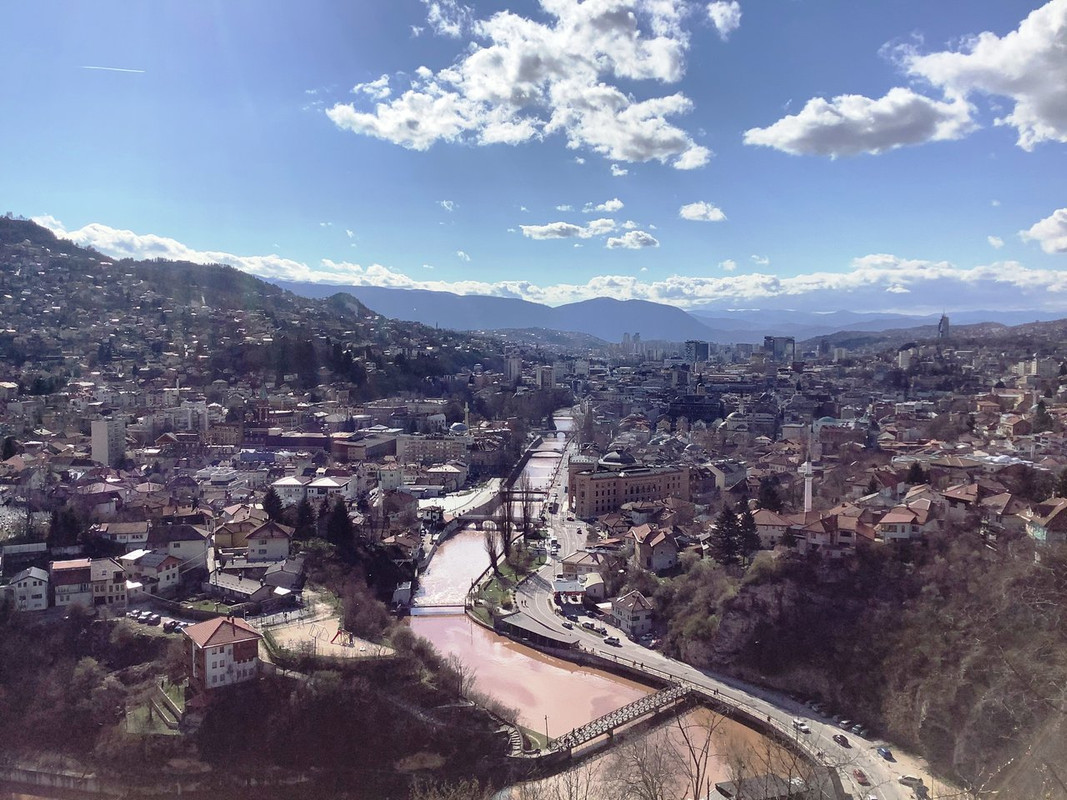 |
|
|
|
Post by kerouac2 on Mar 13, 2021 16:14:11 GMT
It's very nice to have a relatively thin river with a lot of bridges. It is a total pain to try to walk around cities with insufficient bridges like Lyon, Bordeaux or New York where the bridges are few and far between.
|
|
|
|
Post by onlyMark on Mar 15, 2021 11:37:49 GMT
We knew the weather was closing in this week, snow most days according to the forecast, so we had a bit of a run round in the car. For no good reason to see much but to stretch our legs at a couple of small towns and a drive through the hills. We visited Foča and Goražde , neither being particularly inspiring, but both on a river and worth half an hour to break up the drive. We did stop off in a small park for a picnic lunch and I had cheese and cucumber sandwiches, a packet of sour cream and onion crisps, Granny Smith’s apple and a chocolate croissant. I had the croissant to show how international I am rather than relying purely on UK type foods. We also packed a flask with Nescafe. We usually forget but this time we did and later we stopped at a viewpoint to enjoy it. The photos are just random and taken by Mrs M as I decided for some reason to take my camera with me but with a flat battery. In both towns during the Balkan war virtually all the mosques and Muslim graveyards were demolished. This man, had his memorial demolished and rebuilt. So the information gives his name and then states - Born 1898, Died 1941, Grave demolished 1995, Restored 2009 -  A new church has been built recently, just a few years ago. It is still fairly unadorned inside.  But as I walked through a foyer into the main body of the building on the wall to my right and left I immediately saw these -  One may think they are similar to a pizza oven. I didn’t. I thought of something else. If you imagine a trolley with a dead body on it looking like it was just about to be rolled inside, somewhere between 1939 and 1945............. At least the clock tower remained standing from the recent war -  But this mosque didn’t -  This is one of a row of Muslim owned shops. All were now empty and derelict -  Coffee break spot -  A nice new mosque was built on the river -   But still plenty of damage around and abandoned buildings -   Like I said, nothing much of any great note today, but worth always to go places to get a flavour of the country. Bring on the Spring, the greenery and flowers. |
|
|
|
Post by bjd on Mar 15, 2021 16:33:45 GMT
I imagine the new mosque was funded by a country from the Gulf rather than locally?
I think I saw those pizza oven things in churches in Belgrade too. Something to do with candles, isn't it?
|
|
|
|
Post by lugg on Mar 15, 2021 19:56:41 GMT
Like I said, nothing much of any great note today, but worth always to go places to get a flavour of the country. Bring on the Spring, the greenery and flowers. Mrs M's photos are great and I really enjoyed seeing more of your surroundings, the remnants of the war remain poignant.
|
|
|
|
Post by bixaorellana on Mar 15, 2021 22:27:21 GMT
On the one hand, a nice day out in the car seeing new sights and enjoying a picnic sounds great. But I suppose you all were somewhat sobered by the all the evidence of war damage. There does seems something particularly spiteful about destroying a gravestone. I thought exactly the same thing about the oven things in the church. Are they maybe some kind of mausoleum -- the kind usually rendered with a marble rather than metal facing?
The vistas you get from these drives are wonderful, as are the pictures both of you take.
|
|
|
|
Post by onlyMark on Mar 16, 2021 5:56:46 GMT
The war damage and things to do with the war are everywhere, which is a good thing in that it cannot be forgotten but a bad thing in that it must be difficult with all the constant reminders to move on. I'm wondering if there'll come a time when I fail to notice them, which I doubt but also makes me wonder if those that have always lived here now pay the scant attention, like just part of the scenery.
The metal oven, as bjd noted, are just for candles, do you call them votive candles? No idea but this is the first I remember seeing in this style so I'll look out for them in future to see if they are all metal or some with marble.
|
|
|
|
Post by questa on Mar 20, 2021 5:33:53 GMT
wooden minarets - the short answer is when the mosques were originally built in the Ottoman period here, in the 15th Century, the small ones were built using local materials - In regions where the the workers toiled at some distance from the village mosque, they built small buildings near their workplace and simply to shield them from the weather while they attended the compulsory Friday prayers |
|
|
|
Post by onlyMark on Apr 9, 2021 14:30:44 GMT
A slight diversion today on a walk took me to a slightly contentious monument. I knew it was here but hadn’t chance to walk to it until this lunch time. I’ll begin before the few photos to record some quotes and a report from locals - “If there is another siege, I would rather die than eat ICAR.” - Anonymous citizen of Sarajevo. (ICAR/IKAR refers to the item produced by Italy as a canned beef) “Residents of Sarajevo pass by a monument raised to canned beef April 6, 2007, that Sarajevans received as part of international humanitarian aid during the city's 1992-95 siege. Sarajevo artists raised a monument to canned beef on Friday in a gesture ridiculing donors for providing such an unpopular food as humanitarian aid during the Bosnian capital's 1992-95 siege. "The Monument to the International Community" from the "Grateful Citizens of Sarajevo" reads an inscription at the marble foundation of the 1-metre-high golden can of beef.” “The message is clear,” said Dunja Blazevic of the Centre for Contemporary Art, which launched the initiative placing the work by artist Nebojsa Seric Soba in the centre of Sarajevo. “The Ikar canned beef is remembered by the people of Sarajevo with disgust. Cats and dogs did not want to eat it and people had to,” she said. “Everybody agreed that we should do the project in this way. It’s witty, ironic and artistic.” This is what it used to look like -  This is what it looks like now - 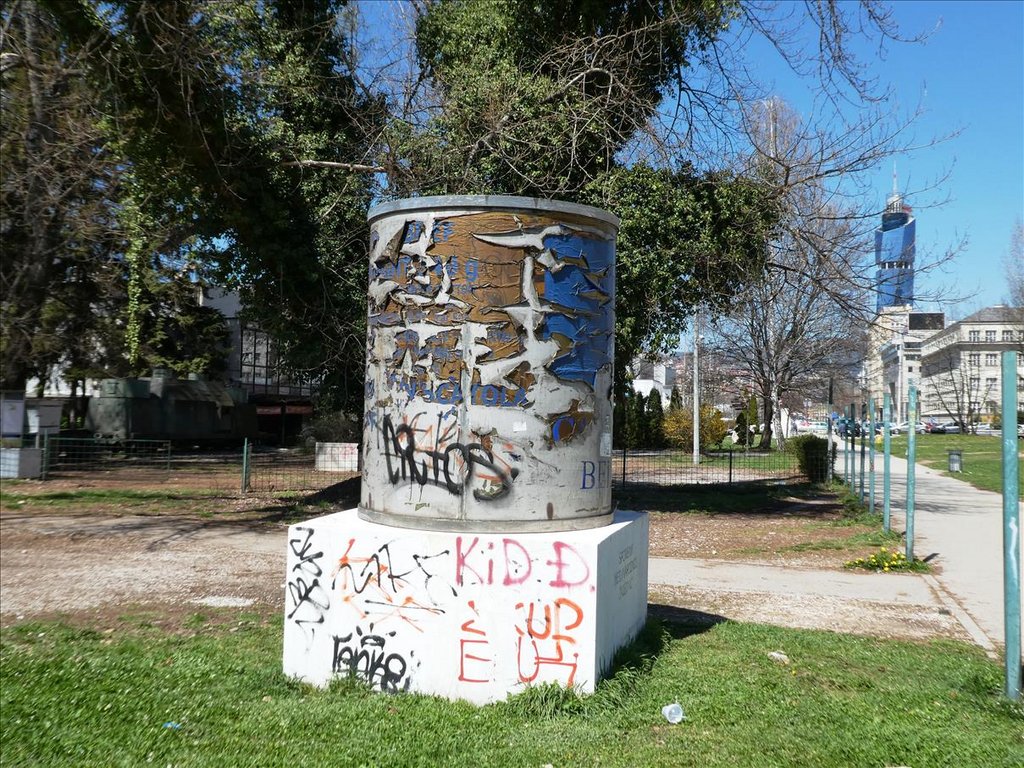 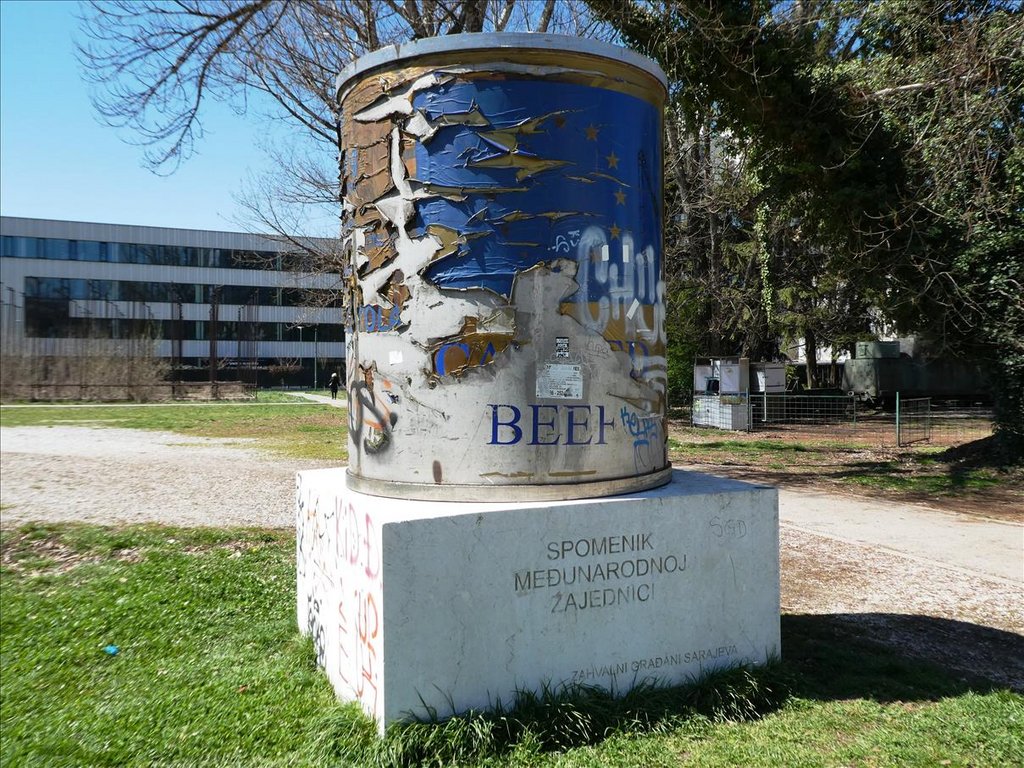  Nearby is a large museum I’ll get round to visiting but out back are a few left-overs from historically recent times. And a kid’s playground. First is a reinforced train carriage and an unusual second device behind it. More in a second - 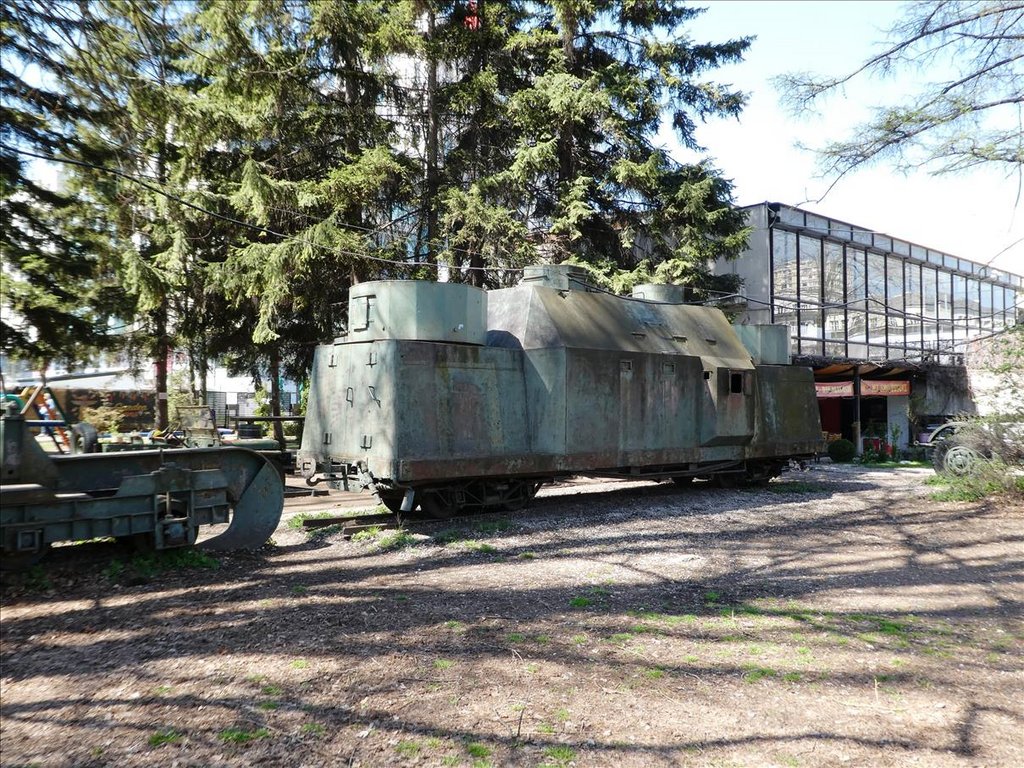 Now for the kids to scramble on, a 1941 Willys Jeep -  A little closer look at the railway carriage -  This is - “The 15 cm sIG 33 (schweres Infanterie Geschütz 33, lit. "Heavy Infantry Gun") was the standard German heavy infantry gun used in the Second World War. It was the largest weapon ever classified as an infantry gun by any nation.” 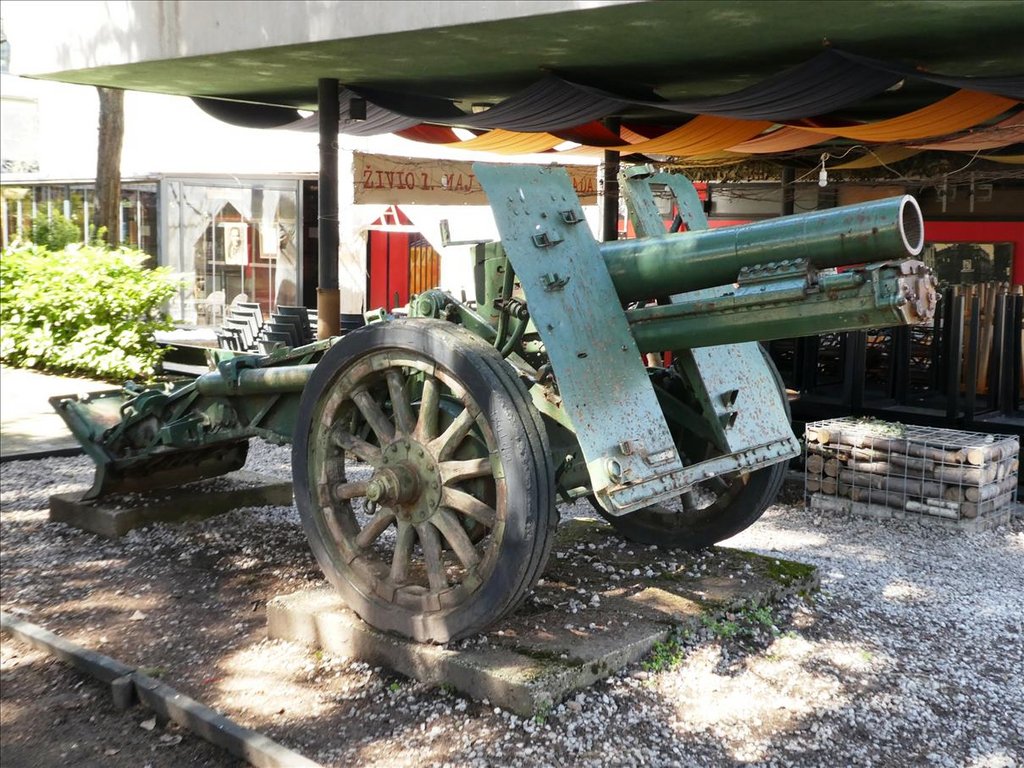 Then we have - “The 7.5 cm kanon PL vz. 37 (Anti-aircraft Gun Model 37) was a Czech anti-aircraft gun used in World War II.” - 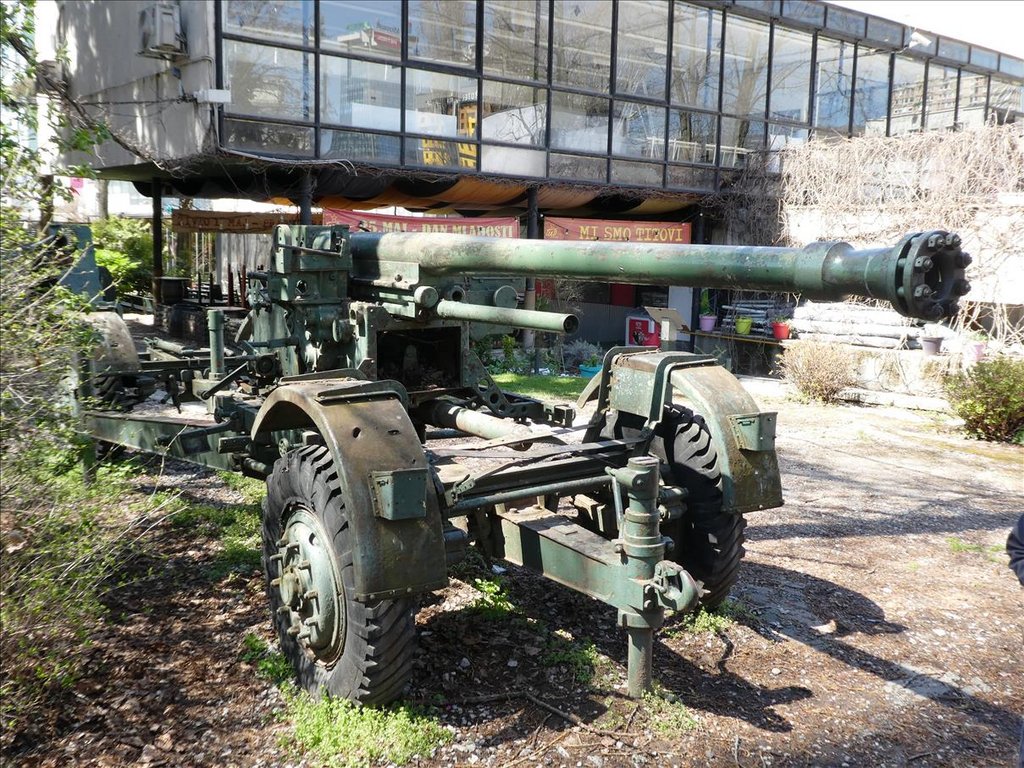 Also - “The M3 Stuart, officially Light Tank, M3, was an American light tank of World War II. An improved version entered service as M5. It was supplied to British and other Commonwealth forces under lend-lease prior to the entry of the U.S. into the war.” - 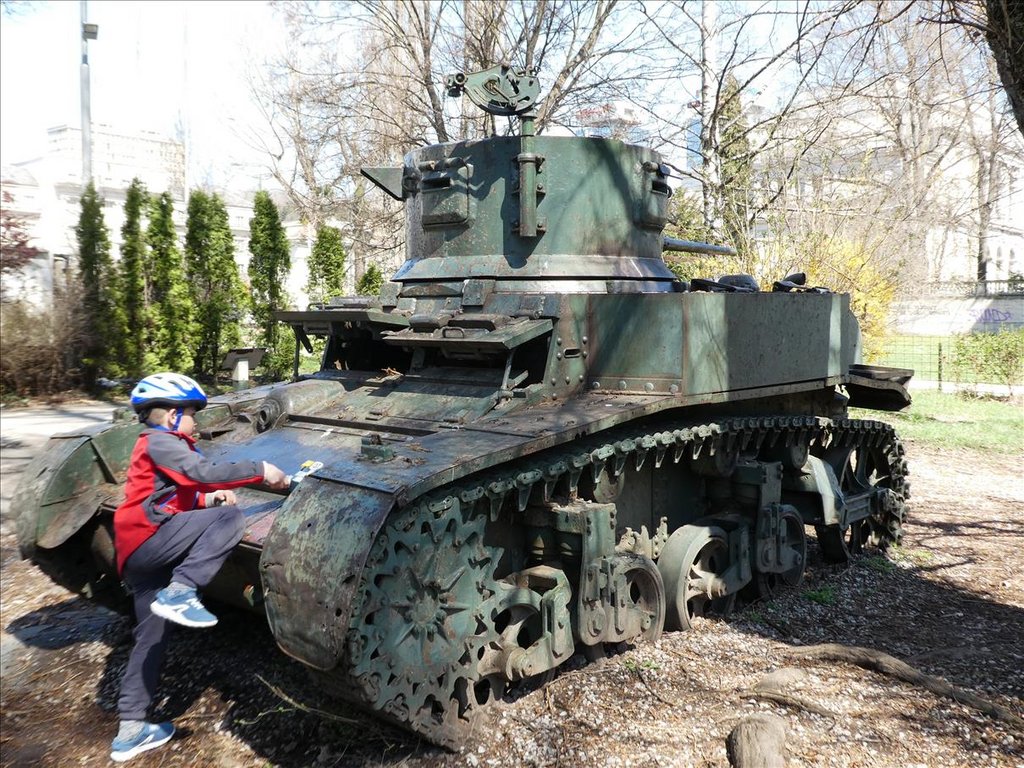 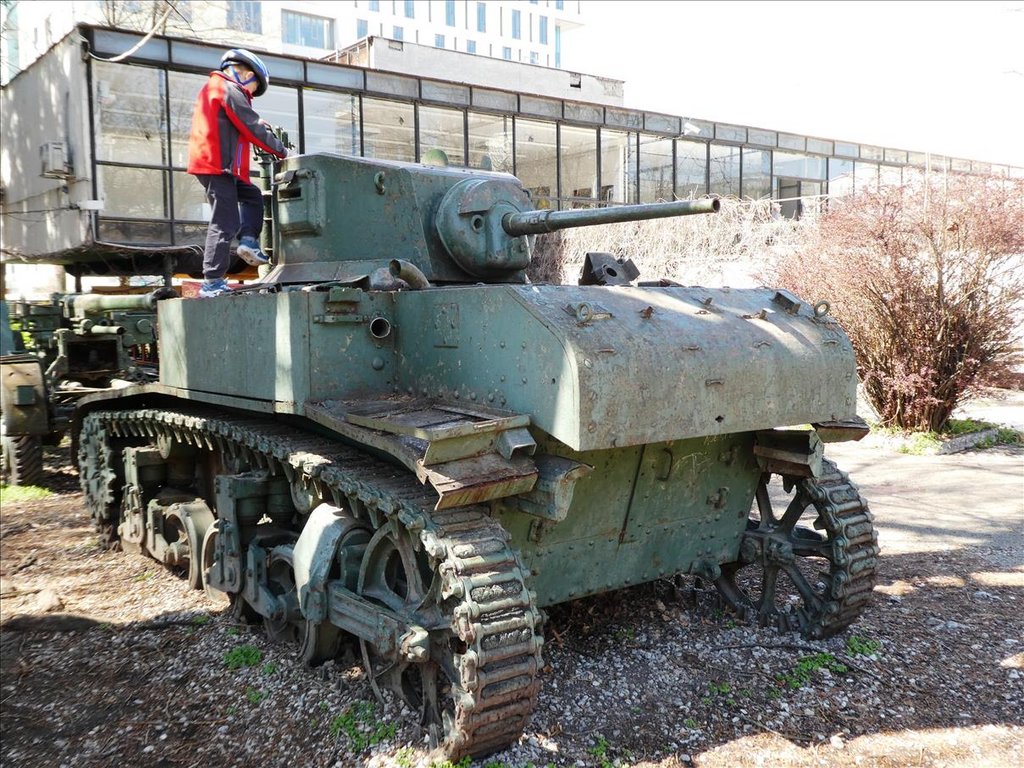 This is the second carriage. I know what it is. I’m sure someone else or many others will also know - 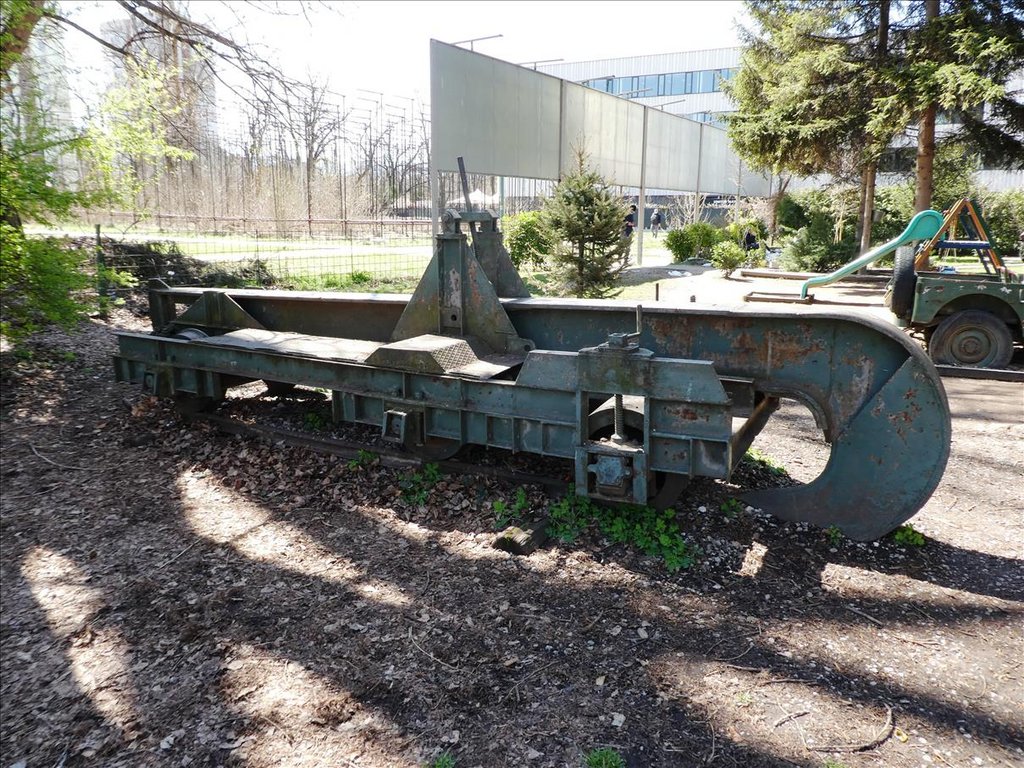  A curiosity nearby as this large block with writing on it. Even though I understand the words, I’m a little confused -  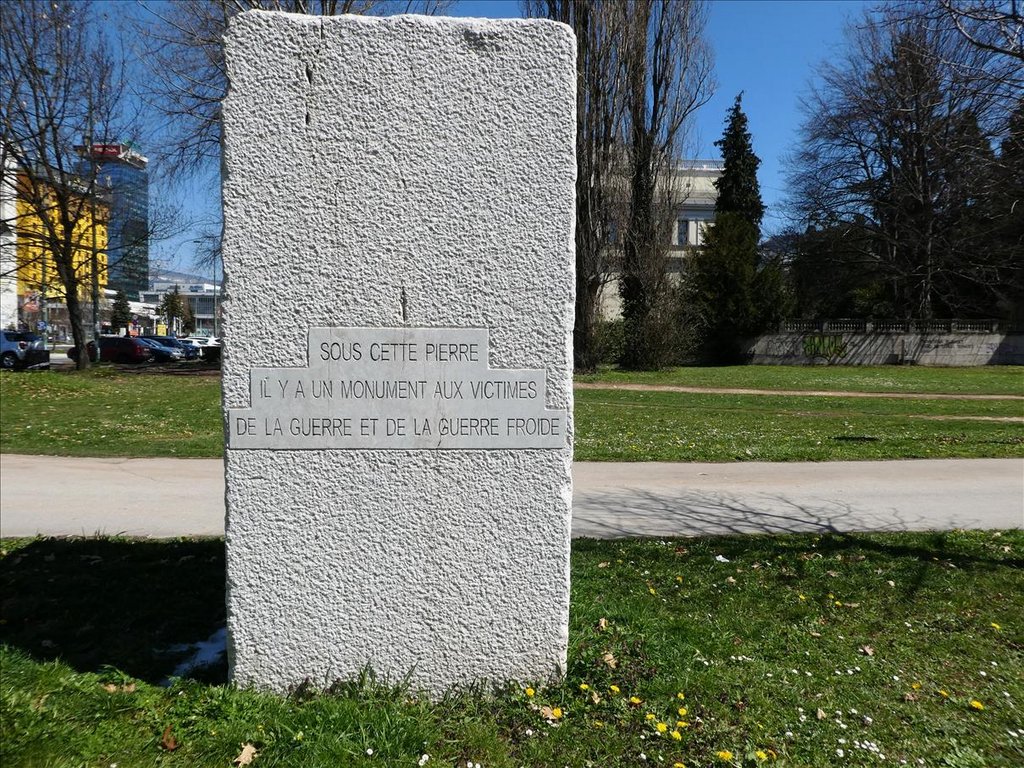 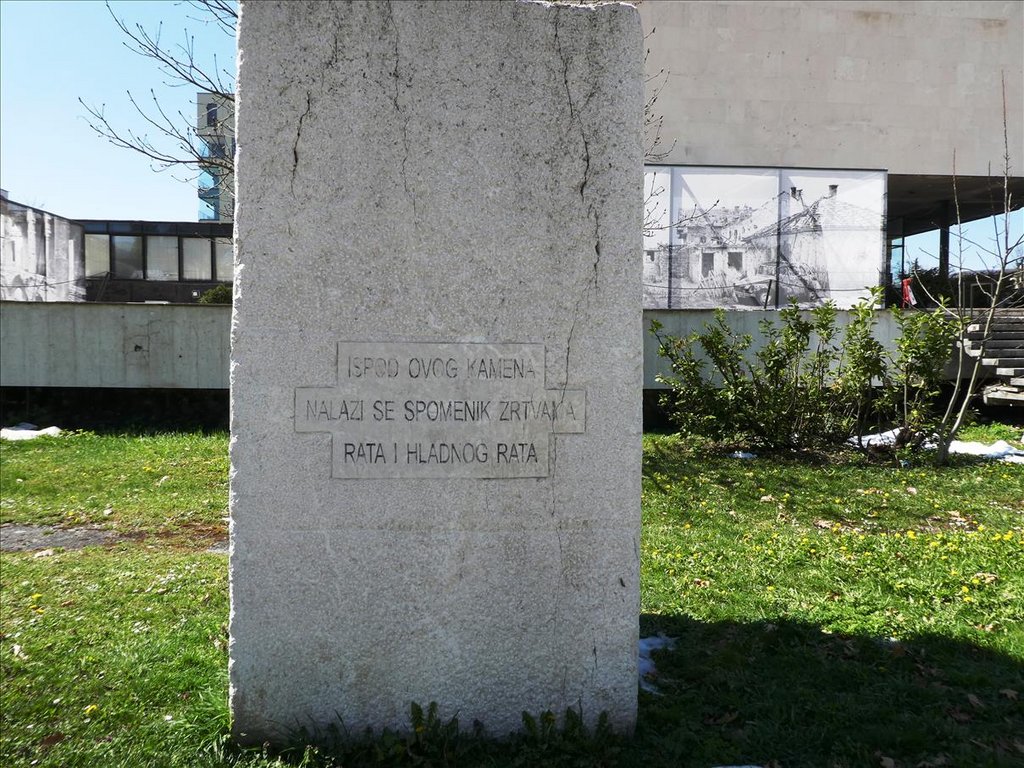 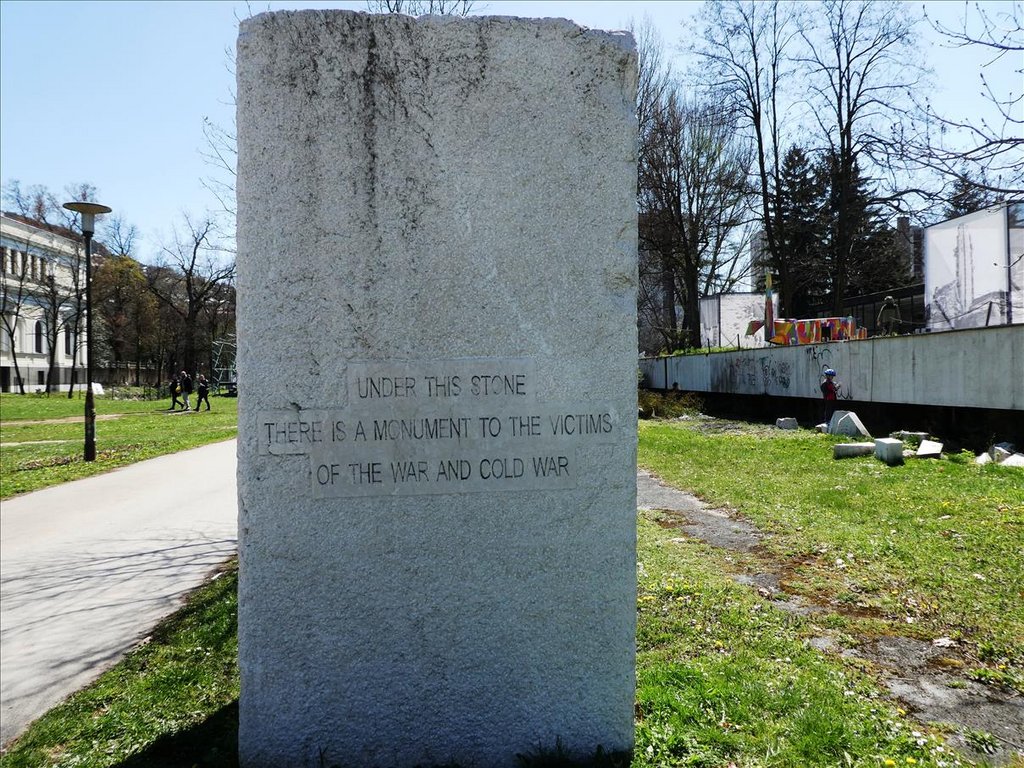 There are quite a few little things to see in the city and once I come across them, I’ll add more. None are worth doing a full report for. |
|
|
|
Post by bixaorellana on Apr 9, 2021 16:27:22 GMT
Um, doesn't the hatred for the canned beef seem somewhat ungrateful, even if it was dreadful having to eat it day after day It would seem that canned meat is a valuable source of protein and the fact that it was canned would make it easy to deliver and to store. I believe that there was a water shortage during the siege also, meaning that dehydrated foods probably weren't the best option.
The military remnants look a great deal like the outside part of the Revolution museum in Havana. No idea what that second carriage is.
I'll be mulling for a while over the inscription on the monument to the victims of the war and of the cold war.
|
|
|
|
Post by kerouac2 on Apr 9, 2021 16:55:41 GMT
I had canned beef (but from the UK) inflicted on me when I went to the Maldives long long ago. The hotels were full board since each hotel was on its own tiny island. The only choice possible was to say "no, I don't want any." I shudder at the memory of the tinned vegetables, too. Back then, the Maldives did not produce anything (they probably still don't, maybe a bit of fruit). I'm sure there was plenty of seafood, but they seemed to have decided that we would not want that.
|
|
|
|
Post by onlyMark on Apr 9, 2021 17:45:07 GMT
doesn't the hatred for the canned beef seem somewhat ungrateful, even if it was dreadful having to eat it day after day Some quotes for you. I have no opinion one way or the other as I obviously wasn't there. "In the opinion of the monument's creators, the aid was of the wrong kind: barely-edible canned food (some left over from the Vietnam War and over 20 years expired, some consisting of pork for this half-Muslim country, and in popular legend refused by dogs and cats) instead of weapons." "Sarajevo had to get help from Colombian drug cartels to smuggle in firearms and ammunition. Supplies dwindled after the first year. Food all but ran out, the limited medicine was traded on the black market and people burned furniture to keep warm during winter in Sarajevo. The situation was dire." "In July 1993, the longest airlift in history began, lasting until January 1996. More than 160,000 tonnes of food, medicine and blankets in over 12,000 flights supplied the capital. However, many Bosniaks* in Sarajevo weren’t happy and felt the international community didn’t care that much. The food they desperately needed was either 20-years-out-of-date Vietnam War leftovers, pork-based or the infamous ICAR Beef." *Bosniaks - are typically characterized by their historic ties to the Bosnian historical region, adherence to Islam since the 15th and 16th centuries, culture, and the Bosnian language.
|
|
|
|
Post by kerouac2 on Apr 9, 2021 18:11:19 GMT
François Mitterrand flew into Sarajevo in the middle of the siege on 27 June 1992 but apparently he didn't bring anything except words. Nevertheless, he was the only head of state who dared to do such a thing.
|
|
|
|
Post by bjd on Apr 9, 2021 19:16:53 GMT
That old canned beef makes me think of the US supplying canned spaghetti to Italy after WW2.
Why do places that have suffered so much from war have war museums and weapons displays? In Belgrade too there is a war museum, which we didn't visit.
|
|
|
|
Post by questa on Apr 10, 2021 4:41:08 GMT
Donor countries are often guilty of using charitable organisations to off-load unwanted surpluses or food that has spoiled. In Indonesia's "Year of living dangerously" (1966) drought, terrorists and volcano eruptions led to severe starvation. The citizens of Java sent 'relief' to Bali...not rice or fruit and veg which were desperately needed. but corn. Not edible corn but the harsh corn they feed the animals. More people died from eating this than from any other cause and the Balinese still carry bad feelings for this.
|
|
|
|
Post by onlyMark on Apr 11, 2021 18:15:13 GMT
The question was, what is this?  Ok, I'll tell you. It's a device used to rip up rail tracks as part of a scorched earth policy. Usually it was as German forces are retreating, but not always. There's only two or three known to be left. This one, one in Serbia and one somewhere else. Can't remember now. |
|